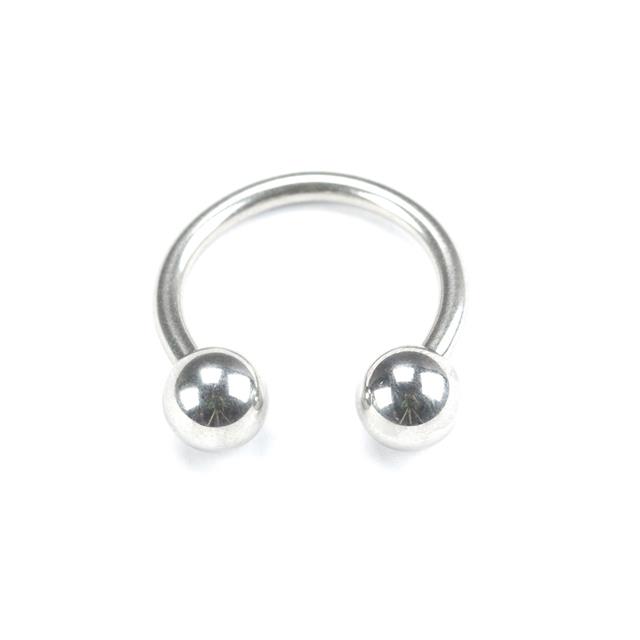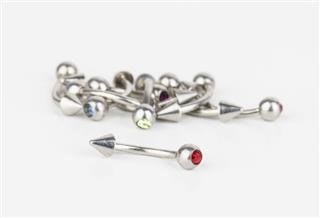
While industrial piercing is one of the most popular types of ear piercings, it must be noted that it takes longer to heal, as it a straight barbell is passed through two holes in the ear cartilage. This ThoughtfulTattoos write-up provides some information on the measures to be taken to speed up the healing process for an industrial piercing..
Industrial piercing, which is sometimes referred to as the construction piercing, is a double piercing. It has become a craze among young girls and boys due to its uniqueness. This piercing involves making two holes on the ear cartilage. The first piercing is made on the upper ear cartilage, just near the head, while the second one is done diagonally opposite to the first one. After the piercings are done, a straight barbell is passed through the two holes. The barbell could be made of surgical steel or gold. However, a flexible plastic tube can also be used during the healing process. Some piercers may recommend the use of captive bead rings for each hole during the healing process. These can later be substituted with barbells. However, this does not usually work, one might end up with a mispositioned piercing.
While the industrial piercing might look really cool, it is extremely essential to follow the aftercare instructions seriously. The piercing takes longer to heal, and if proper care is not taken, the risk of infection increases. To ensure that your healing process goes very smoothly, get your piercing done only by an experienced piercer who would follow all the necessary precautions. Even a small mistake could put you at an increased risk of developing an infection. So, follow all the aftercare instructions that have been suggested by the piercer.
Stages of Healing
Like all types of piercings, one has to go through different stages during the healing process. However, the recovery process might differ from person to person. The healing time would also depend on the procedure followed by the piercer.
➻ Piercing is always done with a 14 gauze hollow piercing needle. If the piercer plans to use the gunshot, you should tell him/her to use the hollow piecing needle. The gunshot method could lead to the scarring of the ear cartilage tissues. Also, there’s a greater risk of developing an infection.
➻ As industrial piercing involves two piercings, it can be quite painful. The pain is more likely to be more severe during the second piercing. Though it may not bleed much, the throbbing sensation might be experienced for sometime near the pierced area. Also, the pierced area might swell, and remain swollen for a few days.
➻ The healing time can be anywhere between 6 months to one year. Though this may differ from person to person. The recovery would be faster in case of individuals who religiously followed the instructions on piercing aftercare. It must be noted that the first fourteen days are the most crucial. During this time, one must avoid touching the pierced area. Don’t allow anyone else to touch the pierced area. You should only touch the piercing when you have to clean it. Wash your hands thoroughly before touching the piercing. This will lower the risk of a bacterial infection.
➻ It is very natural for the ear to become sore for the first few days after the piercing is done. For some people, soreness might be experienced for a longer duration. However, the soreness will resolve soon, if you follow the aftercare instructions.
➻ If you don’t clean the piercing properly, or accidentally sleep on that side, you are likely to experience soreness around the pierced area. You can apply a salt-based solution on the affected area. If swelling, soreness, or other unpleasant symptoms persist for a long duration, it is advisable to consult your healthcare provider.
On a concluding note, the healing process could vary from person to person. However, the recovery will be faster if you follow the aftercare instructions properly. Follow the instructions for at least a year, even if the piercing looks fully healed. Do not change the jewelry for at least 3 months.
Disclaimer: The information provided in this article is solely for educating the reader. It is not intended to be a substitute for the advice of a medical expert.










